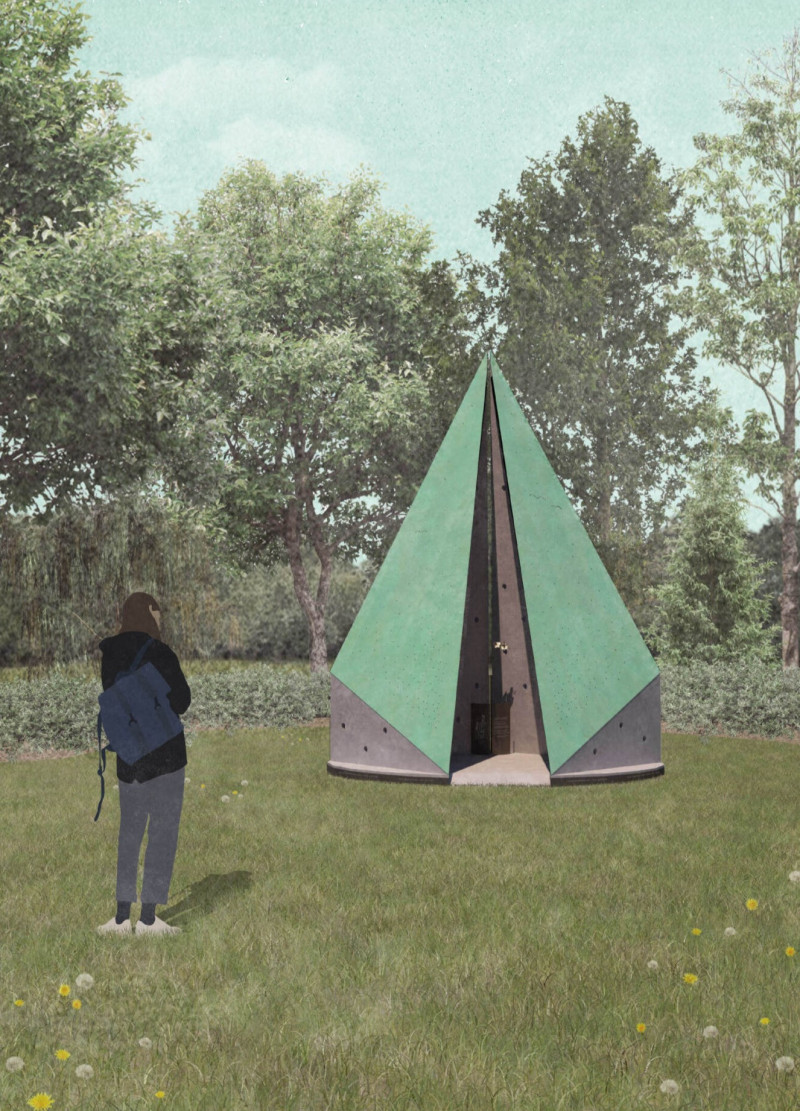5 key facts about this project
The Silent Witness genocide memorial is an architectural response to the historical events surrounding genocide. Designed as a minimalist tent structure, it serves as a space for reflection and commemoration. The memorial is located in a thoughtfully chosen area, intending to engage visitors with its themes of vulnerability and loss. The overall design concept emphasizes simplicity to create a safe environment, while also confronting visitors with the realities of past injustices.
Design Concept
The choice of a tent as the primary form highlights themes of refuge and safety. This design decision allows for a space that expresses both peace and the painful memories associated with those who have suffered. The tent's ambiguous structure encourages varied interpretations, inviting a contemplative experience that allows individuals to reflect on the emotions tied to historical tragedies.
Materiality
The memorial features a roof made from patinated copper sheeting, offering a reflective and somber appearance. The roof is intentionally perforated, resembling bullet holes, which connects visitors to the violence experienced during genocidal acts. The material not only enhances the visual experience but also serves as a poignant reminder of the atrocities faced by countless individuals throughout history.
Interior Experience
Inside the memorial, light and shadow play an important role in shaping how visitors feel while moving through the space. Natural light filters through the roof's perforations, creating a unique atmosphere. The walls hide etched windows that display portraits of victims, transforming abstract statistics into personal stories. This aspect brings human dignity to the memorial, bridging the gap between collective memory and individual experiences of suffering.
Symbolic Elements
A central feature of the memorial includes a brass installation depicting a child in a cowering position. This representation captures feelings of vulnerability and fear. It draws attention to the impact of genocide on young lives, encouraging emotional engagement from visitors. Nearby, a receptacle holds a single stemmed flower that symbolizes the fragility of life. When the flower wilts and is replaced, it signifies an ongoing commitment to remembrance and the necessity of preventing future atrocities.
The careful integration of these elements ensures the Silent Witness memorial serves as a significant space for reflection, honoring the lives of those who have endured suffering.






















































